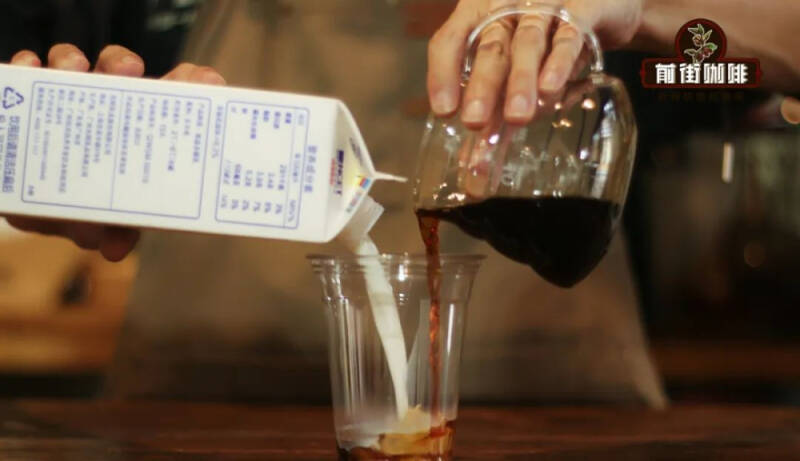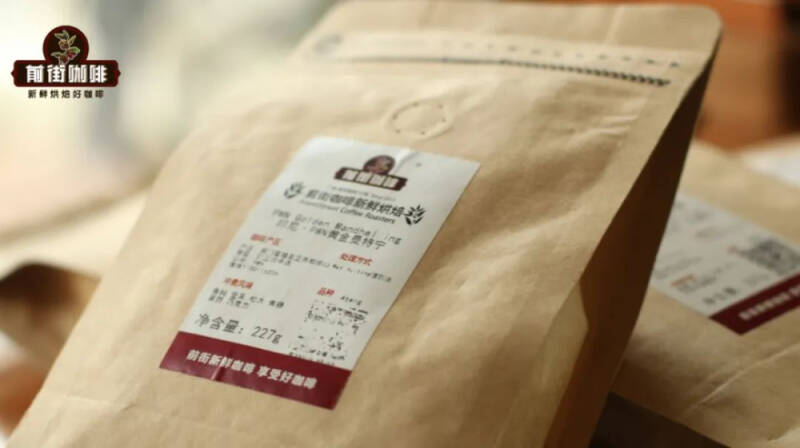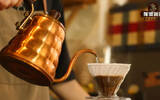What's the name of hand-made coffee with milk? What's Ole Coffee? What can I do to taste good?
We are ready for the Spring Festival. We must have already hoarded the coffee beans we drank during the Spring Festival. I don't know if the returning friends are also worried about too much luggage, so they can only put their hands on the utensils, and it's not easy to have a cup of milk coffee. So, today, in front of the street, I would like to share with you how to make it better with milk.

Hand-brewed coffee + milk = Ole coffee?
You may be familiar with the way to add milk to espresso to make fancy coffee such as latte or cappuccino, but Europeans had a way of adding milk to black coffee long before espresso. It is "Caf é Au Lait", and the French literal translation actually means "coffee and milk". Since the mainstream coffee extraction methods in Europe at that time were filtered (similar to flannel hand-brewing) and soaking (similar to French kettle), Oulei coffee at that time was mainly made of the above two forms of black coffee with milk.
After hundreds of years of development, the definition of Ole Coffee has become more inclusive, that is, coffee drinks made from arbitrary black coffee and milk. So in fact, the way to add milk to hand-brewed coffee can also find a historical basis.
What coffee beans are suitable for this way of drinking?
Compared with the espresso liquid extracted by high temperature and high pressure, the concentration of coffee filtered by brewing drops is much lower than that of Italian concentration, and it is obviously "light" when tasted alone. Hand-brewed coffee as an extraction method reflecting the flavor characteristics of beans, after the addition of milk, an accidental flavor will be masked. So if you want to make a good cup of Ole coffee, you should pay special attention to the choice of beans.

Seeing this, some friends may have guessed what kind of beans to choose. Qianjie is recommended to choose medium or even deep-roasted coffee beans, generally speaking, over-roasted beans will enhance the intensity of the coffee, adding a little milk can soften the coffee, but also taste the flavor of milk. If you don't know the baking degree of beans, you can choose the type of flavor described as chocolate, nuts, cream and cocoa. Qianjie Coffee Dou list, for example, Brazilian Queen Manor, Manning, Bird of Paradise and Yunnan Xiaomi are more suitable.
Of course, medium-to-shallow baked beans that show the sour nature of flowers and fruits can also be selected. However, after trying in the front street, the traditional method of hand washing after adding a little fresh milk, the flavor is extremely difficult to distinguish, and finally turns into a cup of diluted milk. However, the experiment also found that coffee beans with fermentation, wine flavor and other flavor description, after tasting with a small amount of milk, the overall taste is relatively coordinated and easy to distinguish. Before the street coffee beans as an example, Colombia claw, Honduras Shirley is a good choice.
What does cooking need to change?
In order to ensure that after the addition of milk, the flavor of coffee will not be difficult to detect because of dilution, the concentration of hand brewing as the "base" of milk coffee must be adjusted and increased, and the addition of milk must be appropriate, accounting for a small proportion.
To reduce the powder-to-water ratio to extract a full-bodied, layered hand punch, we need to reduce the powder-to-water ratio to get the main aroma substances in the coffee. According to the attempt of Qianjie, it is more appropriate for this ratio to fall between 1, 8, 1 and 10. Qianjie takes 15g powder to extract 1x 2 portions of powder as a reference, and the powder-to-water ratio at 1:10 requires 150g hot water to be injected.
Fine grinding due to the reduction of the ratio of powder to water, it is necessary to adjust the way of fine grinding to prolong the extraction. When the coffee powder is fine, the falling rate of the water will slow down, which can prolong the extraction time. Qianjie recommends that coffee beans roasted by Zhongshen should be screened with a screening rate of 80% (store ek43s 10), while moderately shallow beans should be grinded with a screening rate of about 85% (store ek43s 9).
(ek43s 9 grinds on the left and 10 grinds on the right)
The method of multi-stage water injection under the same powder-water ratio, the more the number of water injection sections, the more times of stirring and scouring the powder layer, and more aroma substances can be released. In order to extract flavor substances more fully, Qianjie suggests using three-stage cooking techniques.
Which kind of milk should I use? How much should I add?
In the choice of milk, Qianjie prefers to use full-fat fresh milk, which can not only match with the aroma of medium and deep roasted beans, but also make the coffee more greasy and taste richer and fuller. There are still a few bottles of oat milk left in the front street a few days ago. after many attempts, the aroma of oat milk is difficult to blend with the coffee, and it always misses the point. Interested or lactose intolerant friends can try and come back to tell Qianjie. )
As for how much milk is appropriate, this has to be adjusted according to your own taste. Qianjie tried the above beans, 15 grams of coffee powder at 1:10 to brew out about 130g coffee liquid, mixed with about 60m 80g of milk, you can keep a balance, that is, you can taste the sweet taste of the milk and feel the aroma of the coffee at the same time.
-END-
Front Street Cafe
No. 10 Baoqian street, Yandun road, Dongshankou, Yuexiu district, Guangzhou, Guangdong province
Important Notice :
前街咖啡 FrontStreet Coffee has moved to new addredd:
FrontStreet Coffee Address: 315,Donghua East Road,GuangZhou
Tel:020 38364473
- Prev

How to make delicious hand coffee with 80 °C water? What is the effect of water temperature on hand-brewed coffee?
When we use coffee beans with different roasting degrees to make hand brewing, they all have a corresponding suitable water temperature for brewing. For example, as Qianjie Coffee often says, the recommended brewing water temperature for lightly roasted coffee beans is about 92 °C (±1 °C). For deep-roasted coffee beans, the recommended brewing water temperature is 88 °.
- Next

Hold it! Lucky 0 yuan around triggered DIY carnival!
▲ click to follow | Daily boutique coffee culture magazine Coffee Workshop nowadays, co-branding of chain brands has become a common marketing strategy. However, Luckin Coffee's frequent movements in the joint-name world are amazing, reminiscent of the old saying: there are joint names every year, especially this year. Luckin Coffee with his innovation
Related
- What effect does Italian American coffee with filter paper have? Will coffee taste better if it is put on filter paper at the bottom of the powder bowl?
- What is the color difference in coffee beans? What are the characteristics of honey processed coffee beans? Why are the anaerobically treated coffee beans uneven in color?
- How does novice Xiaobai quickly get started and make coffee? Newbies learn to make coffee by hand and share the specific steps and process process!
- Costa tea has a shelf life of 100 years?! Expert: Unable to verify
- It's a huge uproar! American milk addition was rejected by Manner employees?!
- Mocha pot coffee bean recommendations| How fine and how much powder should be used for grinding? What parameter ratios do I need to use to make milk with Mocha pot coffee?
- What are the characteristics of the world's top ten coffee beans treated with Costa Rica honey? How to make black honey kadura from Tarazhu Pilon Processing Plant taste good?
- How to make deep-roasted coffee? What grinding water temperature does authentic Jamaica Blue Mountain No. 1 coffee use to brew it well?
- Selected high-grade rose summer coffee flavor tasting guide Why Panama rose summer has the aroma of flowers and fruits
- What equipment does a novice Xiaobai need to buy to learn to make coffee? Filter cup electronic scale bean grinder manual flushing pot purchase guide

